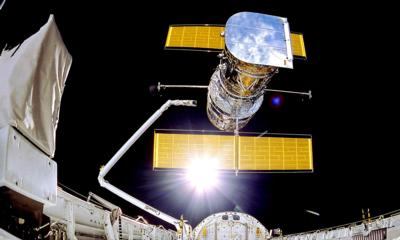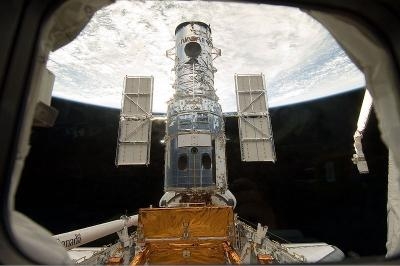Wed, Nov 24, 2021
Reactivated Wide Field Camera 3 Once Again On The Job
After a period of downtime for repairs and recovery of the Wide Field Camera 3 instrumentation, the Hubble Space Telescope is on its way to full operation once again.

The telescope's systems were suspended following an anomaly on October 25, with select capabilities returning in a phased process.
In early November, the agency began an investigation into the cause of Hubble's instruments going into an uncommanded safe mode configuration, suspending operations without notice. While healthy by all indications, the team decided further diagnostics were warranted, and left the systems safe until the issue to be assessed further. Throughout the month personnel narrowed down the problem to a possible issue with the internal systems responses to missed sync messages, as well as the payload computer's monitoring of instrumentation. Earlier this month, the Hubble team identified changes that could remedy the issue, and began the process of selective reactivation for the most pertinent instruments for future missions.

The Hubble team chose to bring the most frequently called upon instrument online, the Wide Field Camera. Responsible for more than a third of the spacecraft's observation time throughout its lifespan, the camera is part and parcel of the Hubble's purpose in orbit. The engineers have begun preparation for a series of changes to the instrument parameters using ground simulators to improve reliability for the system, hopefully resulting in a system that could handle missed synchronization messages without interrupting normal operation in the future. If successful, the same changes could be applied to another Hubble instrument, the Cosmic Origins Spectrograph, to protect its sensitive far-ultraviolet detector. The process will take a few seeks to ensure successful integration when the time comes, and NASA says there are no further message losses like the initial anomaly.
More News
Known Traffic With respect to ATC clearances, means aircraft whose altitude, position, and intentions are known to ATC.>[...]
Aero Linx: Aviation Suppliers Association (ASA) Established February 25, 1993, the Aviation Suppliers Association (ASA), based in Washington, D.C., is a not-for-profit association,>[...]
Abeam An aircraft is “abeam” a fix, point, or object when that fix, point, or object is approximately 90 degrees to the right or left of the aircraft track. Abeam indic>[...]
Aero Linx: The Air Charter Safety Alliance The group, called the Air Charter Safety Alliance, will raise awareness of illegal charter flights among potential customers, charter bro>[...]
“For months, ALPA has been sounding the alarm on the ongoing efforts by some aircraft manufacturers to remove pilots from the flight deck and replace them with automation. To>[...]
 ANN's Daily Aero-Term (06.10.24): Known Traffic
ANN's Daily Aero-Term (06.10.24): Known Traffic ANN's Daily Aero-Linx (06.10.24)
ANN's Daily Aero-Linx (06.10.24) ANN's Daily Aero-Term (06.11.24): Abeam
ANN's Daily Aero-Term (06.11.24): Abeam ANN's Daily Aero-Linx (06.11.24)
ANN's Daily Aero-Linx (06.11.24) Aero-News: Quote of the Day (06.11.24)
Aero-News: Quote of the Day (06.11.24)




